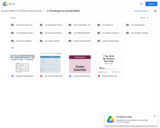
Kindergarten Eureka Math
- Subject:
- Mathematics
- Material Type:
- Activity/Lab
- Assessment
- Author:
- Liberty Public Schools
- Date Added:
- 04/07/2021
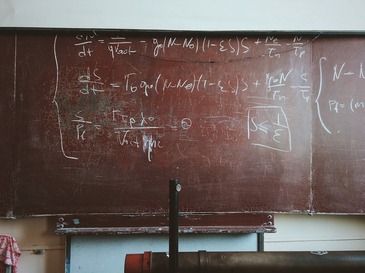

Kindergarten Eureka Math
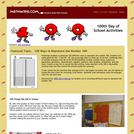
Resources to mark the 100th day of school with math activities. Challenge students to generate 100 different ways to represent the number 100. Students will easily generate 99 + 1 and 50 + 50, but encourage them to think out of the box. Challenge them to include examples from all of the NCTM Standards strands: number sense, numerical operations, geometry, measurement, algebra, patterns, data analysis, probability, discrete math, Create a class list to record the best entries. Some teachers write 100 in big bubble numeral style and then record the entries inside the numerals.

Students will explore multi-digit numbers and the relationship between ones, tens and hundreds; a digit in one place is 10x the digit in the place to its right. Students will use their bodies to represent digits in multi-digit numbers up to the hundredths place and compare these numbers using <, =, >. Students will use their bodies as multi-digit numbers to add and subtract.
Thanks
http://driverrestore.com/
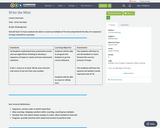
Title: 10 for the Win!Grade: Kindergarten Overall Goal: To have students be able to count by multiples of 10 and comprehend the idea of a sequence of steps involved in a process. StandardsLearning ObjectiveAssessment5d Students understand how automation works and use algorithmic thinking to develop a sequence of steps to create and test automated solutions. K.NS.1: Count to at least 100 by ones and tens and count on by one from any number.Students will be able to program the beebots to go the correct distance. Students will be able to count to 100 by tens.The students will have to use the beebots to move forward the correct amount of steps. The students will have the squares the beebot travels represent sets of 10. Key Terms & Definitions: Sequence- certain order in which steps flowSkip counting- skipping numbers while counting, counting by multiples Number line- line which shows number in order, often marked at intervalsProgram- provide machine with coded instructions to perform task Lesson Introduction (Hook, Grabber): 10 Students will paint hands and stamp them on paper! Each set of hands will represent a set of 10. We will do this all the way up to 100. This paper will be hung in the front of the classroom as a reminder of multiples of 10. Lesson Main:After hanging up our poster with the hands displaying multiples of 10, the teacher would count with the class by 10’s all the way up to 100, while referring to the poster so they can follow along.We will also pass out a number line to the students that highlights 10’s so they have a reference if they struggle.We will make a number line and write multiples of 10 along the side. We will measure out the space between numbers so that it is equal to the length the Beebot travels for each time the button is pushed. For example, if the student wanted to get to 30, they would have to know that you count up by saying “10, 20,30” and they would need to press the forward button on the Beebot 3 times. Each press of the button is a multiple of 10. For this activity, the teacher will break up the students into small groups and they will work together. They will draw a card which will have a multiple of 10 on it ranging from 10-100. The students will have to decide how many 10’s it takes to count up to that number, as well as how many times they will need to program the Beebot to reach the answer on the number line. Lesson Ending:For the lesson ending, we will regroup as a class and talk about how we felt the Beebot activity went. Then we will count together by 10’s up to 100 again to reiterate what we have been learning. Lastly, we will pass out a worksheet to the students which we have included a link to under our resources, and have them complete it individually. This will give us an idea of the students understanding of this concept and can be used for our assessment. Assessment Rubric: GreatAveragePoorIndicatorDescriptionDescriptionDescriptionHand Cut-outsStudent participated in the tracing and cutting out of hands.Student partially participated in the tracing and cutting out of hands.Student failed to participate in the tracing and cutting out of hands.Beebot activityStudent was able to successfully move the Beebot to correct answer.Student was able to move the Beebot, but not to the correct answer.Student was unable to move the Beebot and was unable to correctly answer.WorksheetStudent was able to correctly fill out the entire worksheet.Student was able to fill out 70% of the worksheet.Student was unable to fill out at least 70% of the worksheet. Resources / Artifacts: Number line for students https://www.helpingwithmath.com/printables/others/lin0301number11.htmWebsite which has handprint idea on it https://www.theclassroomkey.com/2016/02/big-list-skip-counting-activities.htmlLesson assessment used in the lesson ending https://www.pinterest.com/pin/287597126178910688 Differentiation: Differentiation for ability levelsIf a student really struggled with math skills, we could place them in a group with stronger math students. We could also offer an alternative activity for the Beebot timeline where we made the timeline go up by smaller multiples. For the worksheet, they could receive a longer amount of time to work on it and have directions read to them/receive help as needed. Differentiation for access & resourcesIf the school had limited resources and did not have access to these robots, they could use other tools like toy cars or something they could use to roll to the spots on the timeline. The game could be altered to fit a large variety of resources. The worksheet we used was found online but a similar version could be created by the teacher. Anticipated Difficulties: Some students might struggle with the concept of skip counting. It may be hard at first for them to remember the multiples of 10. Hopefully by making a poster and providing them with their own number line for reference, this will eliminate some potential difficulties the students may have.
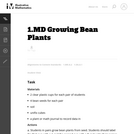
This is a task from the Illustrative Mathematics website that is one part of a complete illustration of the standard to which it is aligned. Each task has at least one solution and some commentary that addresses important asects of the task and its potential use. Here are the first few lines of the commentary for this task: Materials - 2 clear plastic cups for each pair of students - 4 bean seeds for each pair - soil - unifix cubes - a plant or math journal to record data ...
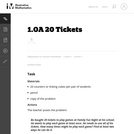
This is a task from the Illustrative Mathematics website that is one part of a complete illustration of the standard to which it is aligned. Each task has at least one solution and some commentary that addresses important asects of the task and its potential use. Here are the first few lines of the commentary for this task: Materials 20 counters or linking cubes per pair of students pencil copy of the problem Actions The teacher poses the problem: Bo bought 20 tickets to p...
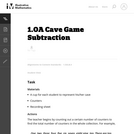
This is a task from the Illustrative Mathematics website that is one part of a complete illustration of the standard to which it is aligned. Each task has at least one solution and some commentary that addresses important asects of the task and its potential use. Here are the first few lines of the commentary for this task: Materials * A cup for each student to represent his/her cave * Counters * Recording sheet Actions The teacher begins by counting out a certain number o...
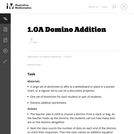
This is a task from the Illustrative Mathematics website that is one part of a complete illustration of the standard to which it is aligned. Each task has at least one solution and some commentary that addresses important asects of the task and its potential use. Here are the first few lines of the commentary for this task: Materials A large set of dominoes to affix to a whiteboard or place in a pocket chart, or a regular set to use on a document projector. One set of domi...
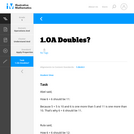
This is a task from the Illustrative Mathematics website that is one part of a complete illustration of the standard to which it is aligned. Each task has at least one solution and some commentary that addresses important aspects of the task and its potential use.
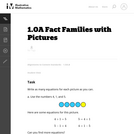
This is a task from the Illustrative Mathematics website that is one part of a complete illustration of the standard to which it is aligned. Each task has at least one solution and some commentary that addresses important asects of the task and its potential use. Here are the first few lines of the commentary for this task: Write as many equations for each picture as you can. Use the numbers 4, 1, and 5. Here are some equations for this picture. 4+1=5 \hskip4em 5 = 4+1 5-1...
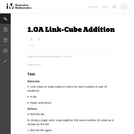
This is a task from the Illustrative Mathematics website that is one part of a complete illustration of the standard to which it is aligned. Each task has at least one solution and some commentary that addresses important asects of the task and its potential use. Here are the first few lines of the commentary for this task: Materials * Link-cubes or snap-cubes (2 colors for each student or pair of students) * A die * Paper and pencil Actions 1. Roll the die. 2. Using a sin...
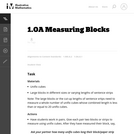
This is a task from the Illustrative Mathematics website that is one part of a complete illustration of the standard to which it is aligned. Each task has at least one solution and some commentary that addresses important asects of the task and its potential use. Here are the first few lines of the commentary for this task: Materials * Unifix cubes * Large blocks in different sizes or varying lengths of sentence strips Note: The large blocks or the cut-up lengths of senten...
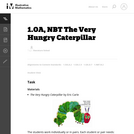
This is a task from the Illustrative Mathematics website that is one part of a complete illustration of the standard to which it is aligned. Each task has at least one solution and some commentary that addresses important asects of the task and its potential use. Here are the first few lines of the commentary for this task: Materials The Very Hungry Caterpillar by Eric Carle The students work individually or in pairs. Each student or pair needs: Three ten-frames for each s...

In this activity, students determine their own eyesight and calculate what a good average eyesight value for the class would be. Students learn about technologies to enhance eyesight and how engineers play an important role in the development of these technologies.

This lesson unit is intended to help teachers assess how well students are able to visualize two-dimensional cross-sections of representations of three-dimensional objects. In particular, the lesson will help you identify and help students who have difficulties recognizing and drawing two-dimensional cross-sections at different points along a plane of a representation of a three-dimensional object.
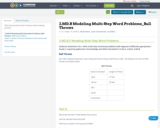
This task provides Grade 3 students with modeling practice.
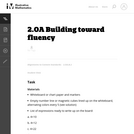
This is a task from the Illustrative Mathematics website that is one part of a complete illustration of the standard to which it is aligned. Each task has at least one solution and some commentary that addresses important asects of the task and its potential use. Here are the first few lines of the commentary for this task: Materials * Whiteboard or chart paper and markers * Empty number line or magnetic cubes lined up on the whiteboard, alternating colors every 5 (see sol...

This is a task from the Illustrative Mathematics website that is one part of a complete illustration of the standard to which it is aligned. Each task has at least one solution and some commentary that addresses important asects of the task and its potential use. Here are the first few lines of the commentary for this task: Materials * Number cards labeled 1-10 (attached as a PDF) Actions * Begin by playing the game as a whole class to demonstrate the rules and for student...
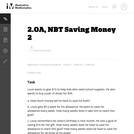
This is a task from the Illustrative Mathematics website that is one part of a complete illustration of the standard to which it is aligned. Each task has at least one solution and some commentary that addresses important asects of the task and its potential use. Here are the first few lines of the commentary for this task: Louis wants to give \$15 to help kids who need school supplies. He also wants to buy a pair of shoes for \$39. How much money will he have to save for ...
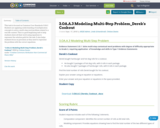
This task is focused on Common Core Standards 3.OA.3 Students are applying understanding of multiplication concepts to solve a multi-step word problem related to a real life context. This is a good beginning task to help students show all their work using equations to represent the solution path for the task. It also helps students focus on precision as they need to represent the problem with the correct equations.